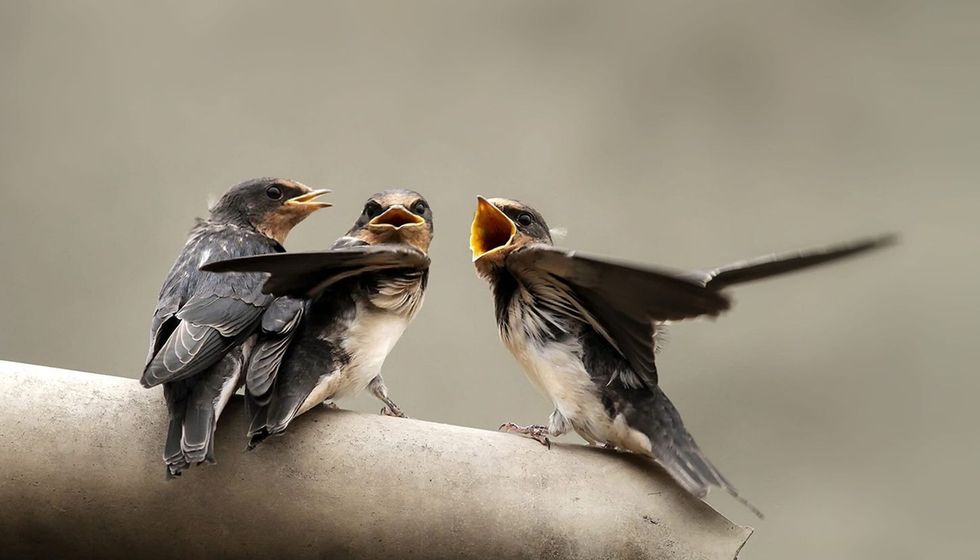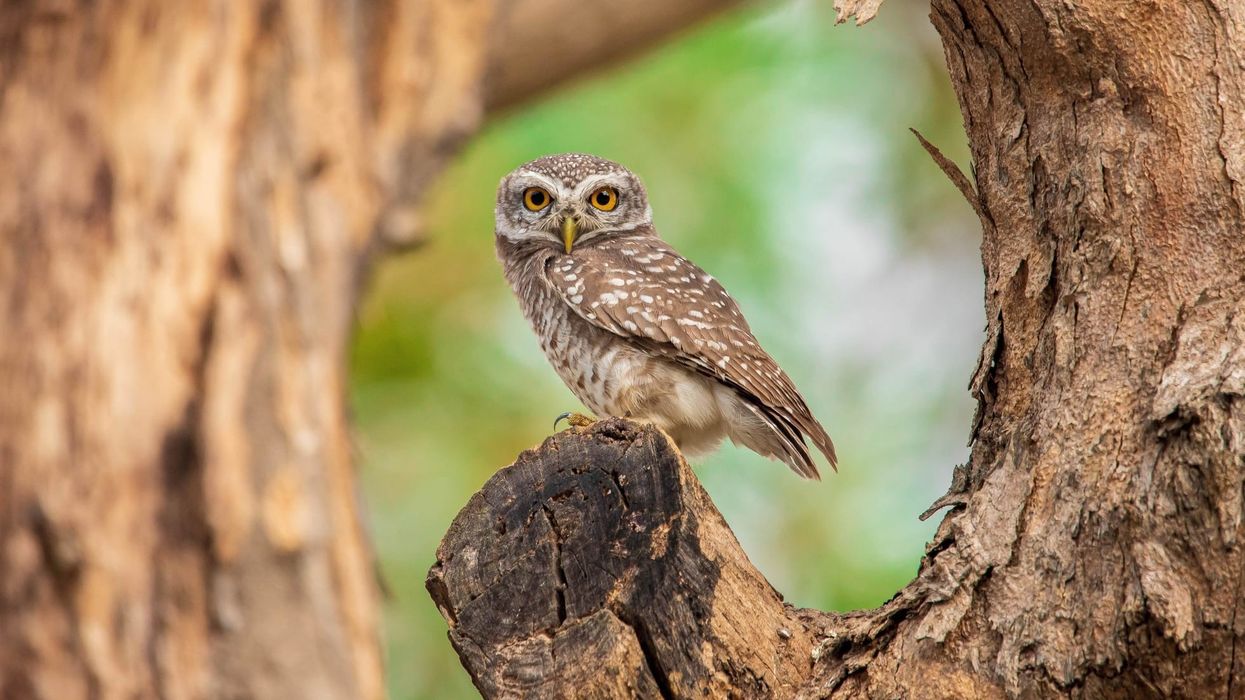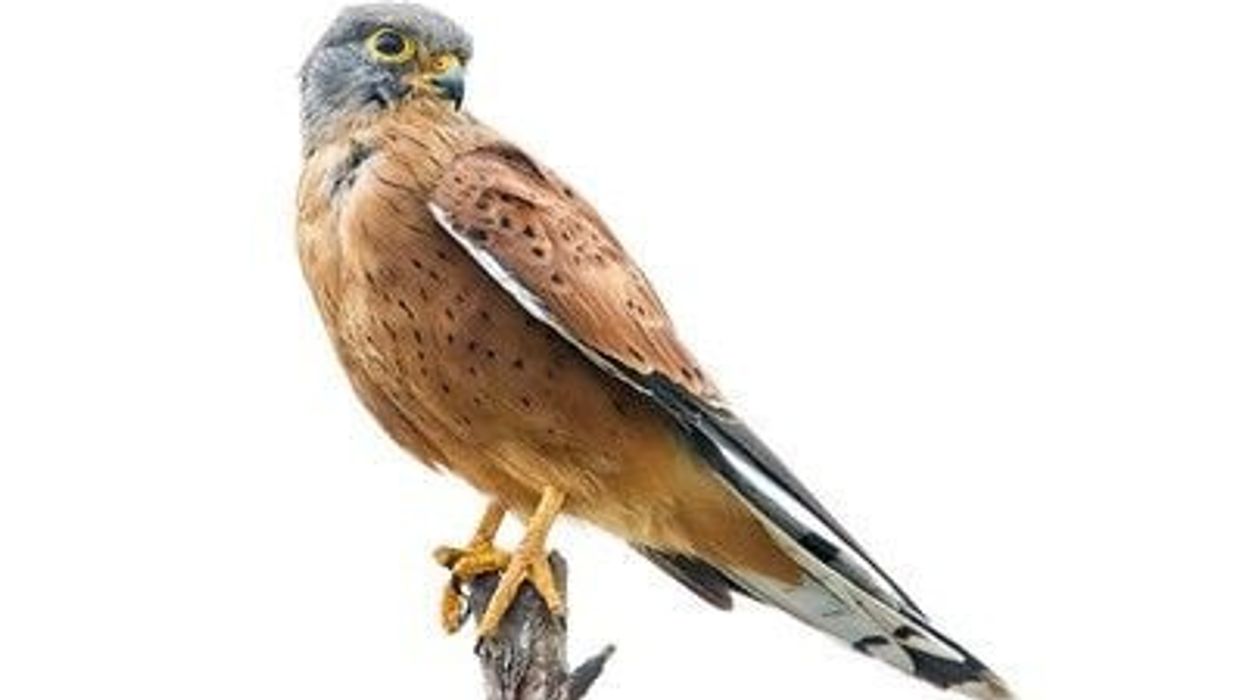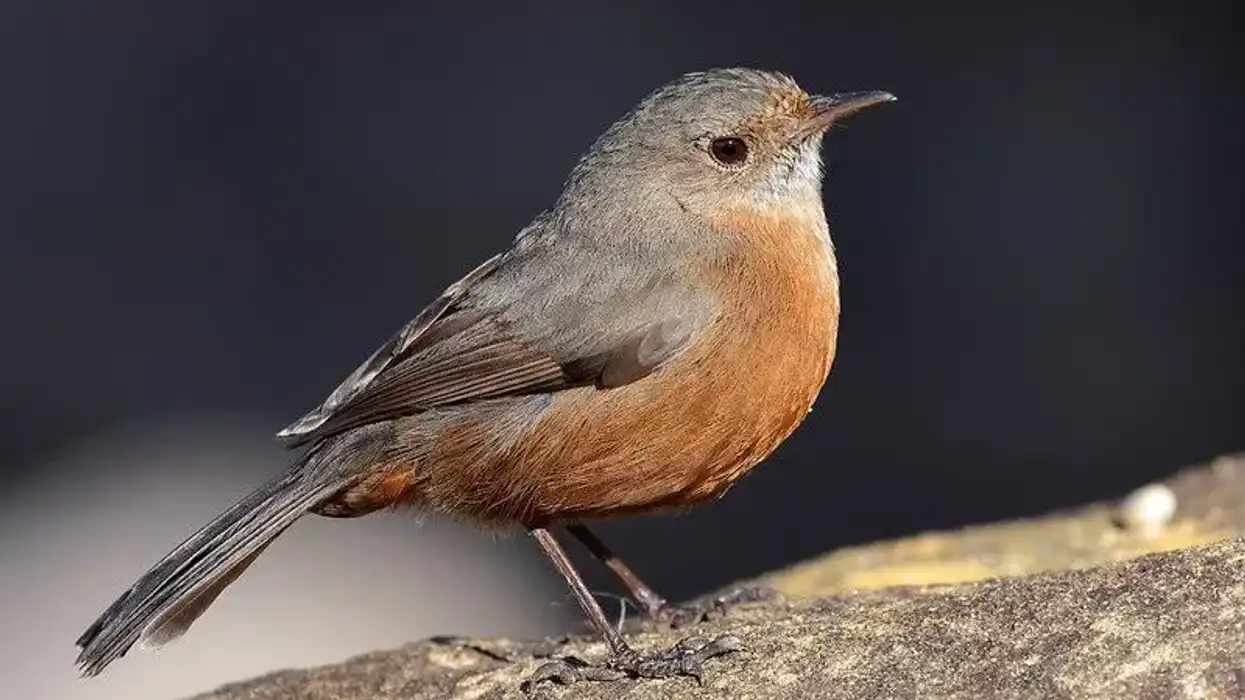Swiftlets or swifts are small birds that are mostly found in Southern Asia, the South Pacific islands, and Australia. They prefer to live in tropical and sub-tropical regions.
Swifts are the members of the Apodidae family, which possess fast light wings and a diminutive beak. They have the ability of echolocation to navigate in dark places like caves where they roost at night. Their nesting sites are also in dark places.
Swifts are famous in the world because of their nests. This bird's nest is usually built with their saliva and other elements, such as leaves, twigs, feathers, and straws. The nests harden with exposure to the air.
Some nests are an important part of Asian cuisine. The nest of edible-nest swift and the black-nest swift are used to make bird's nest soup. They are small in size, but they have the ability to fly great distances.
If you love birds, you may also enjoy these black swan facts and steppe eagle facts.
Swiftlet Interesting Facts
What type of animal is a swiftlet?
The swiftlet is a cave-dwelling bird species that belongs to the swift family.
What class of animal does a swiftlet belong to?
The swiftlet bird belongs to the class Aves of phylum Chordata.
How many swiftlets are there in the world?
The population size of swiftlets has not been estimated yet.
Where does a swiftlet live?
The swiftlet is a member of the swiftlet family consisting of about 30 species which mainly thrive in south Pacific islands, south-east Asia (India and Sri Lanka), the Malay Peninsula through the Philippines, and northeastern Australia. The bird is a tropical and subtropical creature that is also found in central China.
Although, this bird in a temperate zone shows migration in the breeding season.
In India, it is found in the Himalayan mountains and numerous other mountains present at sea level. The 30 species of the swiftlet group are confined to only one island or island chain, though the species surviving on the continent have more broad range distributions.
What is a swiftlet's habitat?
Swiftlet is a bird known for its unusual and stringent habitat requirements. It roosts in a cave or cave-like habitat, like craters or in the back of waterfalls.
In these places, swiftlet does not live in colonies; instead, it coexists with bats. Oilbirds (Steatornis caripensis) do not live in caves because they cannot navigate through dark caverns while flying. However, the swiftlet group solves this problem of these oilbirds.
This obstacle is overcome by echolocation to navigate dark caverns. The swiftlet bird is more adjustable outside the roosting habitat. Its range includes temperate forests, tropical rain forests, remote tropical islands, and mountain regions.
It is constricted to its place only by the existence of aerial insects. The swiftlet usually lives disconnected from populations isolated by hundreds of miles between big groups.
Who do swiftlets live with?
Swiftlets share their habitat with bats in caves. To save themselves from predators, they exist in groups. Adults enhance the speed of flight at the entrance and feed their offspring frequently as compared to birds that do not live in caves. In habitats where the predators are not common, they often fly singly and slowly.
How long does a swiftlet live?
The life span of a swiftlet is between 15-18 years.
How do they reproduce?
Swiftlets are monogamous. Both males and females take care of nestlings. The selection of the nest site and construction are the most important features of Tribe Collocaliini.
One of the unique characteristics of all swiftlets is that they use saliva to build their nest. Some use saliva alone, such as birds of genus Aerodramus, while some use other materials like feathers and twigs. The nests are an important ingredient in the Chinese delicacy 'bird's nest soup.'
To attract females, males show aerial displays. After that, they mate at the nest. The breeding season overlays the season in which there is an increase in the insect population.
The litter size is directly proportional to the location and the amount of food. It also depends on the type of species. For instance, Aerodramus fuciphagus swiftlets lay only one or two eggs.
These eggs' color is pale white and is laid every other day. The incubation period ranges between 21-28 days.
The young fledge after 38 days. Most species are colonial nesters. Some of these Aves form their nests at high-level, shady corners on cave walls.
Some nests contain eggs of multiple parents. Swiftlets living in temperate zones migrate to other places. Alternatively, Aerodrmus prefers the tropical Indo-Pacific area and does not migrate during migrating season.
This species generally stay in one cave or other roosting places. Some caves where swiftlet birds live include Malaysian Borneo, Niah Caves, and Gunung Mulu National Park. In some species, the breeding rate is comparatively higher than other species.
What is their conservation status?
According to the IUCN (International Union for the Conservation of Nature), out of 27 species of genus Collocalia, six are on the verge of Extinction. The volcano, waterfall, and Mascarene swiftlets are Near Threatened.
However, the edible nest swiftlet, also known as white nest swiftlet, is listed as Least Concern by IUCN. There is the possibility of overutilization of its creature in the Chinese bird industry.
Swiftlet Fun Facts
What do swiftlets look like?
Swiftlets are small and indistinguishable birds with few remarkable physical features. All members of the genus Collocalia are pale with dark-brown to black plumage. Some species have white or gray streaks on the plumage.
All swifts are practically observed in flight. Otherwise, they stay compact and rounded with a tiny difference between head and body. The wings are projected outwards.
The beak is small but opens broad when capturing insects in flight. The size range is variable in every tribe. For instance, pygmy swiftlets weigh nearly 0.01 lb (5.4 g), whereas the giant swift's weight is around 0.07 (35 g).
Swifts do not show sexual dimorphism. Along with it, all other similar features make it difficult to identify different types of these fast aerial insectivores. All swifts possess four toes, excluding Papuan swift, which does not have hallux (back toe).
The legs are diminutive. Therefore, it is difficult for them to perch, but they can easily cling to vertical surfaces. The primary feathers and breast muscles are very long, which is the reason behind gliding flight.

How cute are they?
Swiftlets are super cute birds. It is amusing to watch them, particularly when they fly or sit at their nests.
How do they communicate?
Most species of swift use echolocation for navigation in caves. They emit a 'rattle-like' call which consists of a row of small clicks. Originally it was believed that only some members of the genus Aerodramus use echolocation. Later it was found that pygmy swifts also use the same process for navigation in low environments.
How big is a swiftlet?
The average size of a swift is nearly 4 in (10 cm) in length, which is three times smaller than a whiskered treeswift.
How fast can a swiftlet fly?
Swifts have fast-flight wings. Their flight speed is around 14.2 mph (23 kph), but the fastest speed is 69 mph (111 kph). The fastest bird in the world is the peregrine falcon that can fly at the speed of 242 mph (389 kph), which is almost four times the speed of swiftlets.
How much does a swiftlet weigh?
The average weight of swift is 0.03 lb (14 g).
What are the male and female names of the species?
There is no separate name given to the male and female of swiftlet species.
What would you call a baby swiftlet?
The baby swiftlet is generally known as a chick or young.
What do they eat?
Swifts are obligate aerial insectivores that mainly feed on hymenopterans, homopterans, and dipterans. They are diurnal animals and return to their roost at night. The chicks are fed 'boluses,' a combination of food matter and saliva.
Are they dangerous?
All species of swiftlets are not dangerous. They are friendly and peaceful.
Would they make a good pet?
It is arduous to keep swifts as a pet because they live in a dark environment.
Did you know...
The family name Apodidae derives from the Greek word ápous, meaning 'footless.' It refers to the small weak legs of the aerial birds.
The swiftlet nest has been collected by swiftlet bird nest collectors since they are edible. Edible birds nest, which are also known as 'Caviar of the East', are created by swiftlets from their protein-rich saliva, and they have been collected due to the fact that they are one of the most expensive food products in the world.
They have also served as medical and rejuvenating benefits in the Chinese culture.
Predators of swiflets include hawks, snakes, crabs, rats, cats, and owls.
Different types of swiftlet
There is a total of 19 genera of swifts which consist of 92 species. Some of them include grey-rumped swiftlet (Collocalia marginata), Ridgetop swiftlet (Collocalia isonata), and Mascarene swiftlet (Aerodramus francicus).
Swiftlet nests
The swiftlet bird's nest is made up of saliva and other materials, such as feathers, leaves, and twigs. It is an edible bird's nest which is an important part of Chinse popular recipe 'bird's nest soup.'
Here at Kidadl, we have carefully created lots of interesting family-friendly animal facts for everyone to discover! For more relatable content, check out these prairie falcon facts and lark sparrow facts pages.
You can even occupy yourself at home by coloring in one of our Swiftlet coloring pages.









